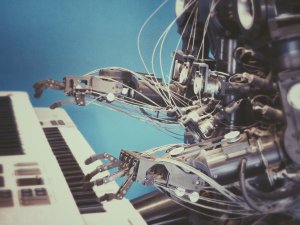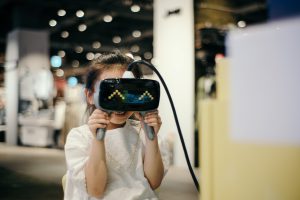We’ve seen three Industrial Revolutions pass by, each fundamentally changing the way employment and business operate – for good and for bad. The economic changes of the first Industrial Revolution reshaped policy and laid the groundwork for the welfare state. It raised the standard of living for the middle and upper classes but worsened the living and working conditions of the poor.
Today, another similar revolution is underway, with rapid developments in technology like gene-editing and artificial intelligence (AI) provoking significant changes to our economies, societies and politics. Answers are cheap in the age of the internet; in the age of AI and machine learning, answers are going to be even cheaper. Want to know what’s happening in the world around you? There are matching algorithms that pair people with news updates, song recommendations and even job openings without any user involvement at all. But what effect will this have on the overall economy?
The Fears:
As with most processes of transformation, the introduction of new technology is being met with fear and scepticism. Ever since the discovery of artificial intelligence and its ability to perform some of the same tasks that humans have been doing, people have been worried about losing jobs to a machine. Researchers point out that around 47% of total US employment is at risk of losing ground to computerisation.[1] In a recent survey, 69% of Malaysians believe the rise of automation will lead to a loss of jobs; 45% believe the most impacted would be young Malaysians between the ages of 18 to 24 because as the least experienced group by the time AI would become widely utilised, they would be the most vulnerable to layoffs.[2]
It is this same fear that is currently playing an important role in how AI and digitisation are being represented online and in social media? There are articles like this one that lists the eight types of jobs that are “unlikely to be occupied by robots or machines, at least in the near future”. Another article advises people to prepare for a less-employed future by “training ourselves to care less about our jobs now”.[3] Much like how the first Industrial Revolution was a turbulent time that caused as much harm to people’s lives as it did benefit them, many people today worry that the upcoming technological revolution will usher in the same turbulence as its predecessor did.
The Facts:
 Fears aside, embracing new technological developments is the biggest commitment that policymakers and businesses need to make right now. And this commitment needs to be done in the belief that tech is – and will continue to be – a generally positive force for society.
Fears aside, embracing new technological developments is the biggest commitment that policymakers and businesses need to make right now. And this commitment needs to be done in the belief that tech is – and will continue to be – a generally positive force for society.
As machines get a little more capable by the day, every inch brings a few more jobs within reach of automation. In most cases, it’s not individual jobs that will be impacted but entire industries as more needs are being met through massively scalable software. And this will have a trickle effect down to our private and social lives. It will be a huge shift in the way society works, but it doesn’t have to be a bad one – we just need to look at the bigger picture.
Even in its current state, technology is doing more than ever. It’s being used in both healthcare and warfare; it’s helping writers publish books and musicians make music. It’s reminding people of birthday engagements and tweaking the photos you take on your phone. It’s helping students write essays, matching jobs to workers, even assessing your credit scores when applying for a loan. In short, it’s making decisions that affect people’s lives right now.
As in the past, technology won’t be a purely destructive force. As some jobs are being automated, new jobs will be created and existing roles redefined. For example, many jobs in agriculture were ‘lost’ due to new advances in technology that automated many of the traditional farming roles. The proportion of the workforce in agriculture decreased from 40% in 1990 to just 10% in 1950; today, this figure is even lower, hovering about 2%.[4] However, these workers didn’t all just become unemployed; instead, they found work in other industries. In China, one-third of the country’s workforce which was in agriculture was absorbed into other sectors such as manufacturing, telecommunications and mining.[5]
The Challenge:
The technical potential for automation differs across sectors and activities. While automation and machine learning will have some effect on almost all jobs, some industries will be more impacted than others depending on the type of work they do. The challenge is preparing industries, businesses and governments to be able to meet this digital transformation. Organisations that fail to anticipate or adapt to new technologies risk being blindsided; either they miss the sudden shift in market perceptions when their customers and stakeholders start demanding or expecting these new innovations or they risk getting left behind. However, those who take note of what’s coming around the tech bend and embrace new technologies gain a first mover-advantage. The ability to react even a few months ahead of the competition can be worth millions or billions of dollars.[6]
Instead, we need to ask ourselves how can technology be used to help people? How can innovations like AI and automation be used to make the most improvements in the best way possible?
For example, in education, new technology will change how we learn. Online courses have changed the “where” of learning from inside classrooms to anywhere with a decent internet connection. In healthcare, the use of technology in diagnostics will transform how resources are deployed, whether it is freeing up more nurses to spend more quality time with patients or how diseases are being treated. More focus could go on prevention and monitoring so that people can live longer, healthier lives.[7]
In consulting, AI and automaton could significantly enhance how consultancy firms tend to operate as well as the quality of services provided to clients. The huge, smarter-than-most-humans, computer AI in science-fiction is still a long way in the future. Machine learning, a sub-field of AI that entails enabling computers to learn, is a lot more viable for use right now. Having a decision-making system learn and teach itself to comb through data to look for patterns to inform transformative strategies for organisations across industries. Naturally, consulting firms have started to take notice; in 2017, Accenture started to offer solutions using tech like data analytics, cloud computing and internet of things to help clients run their business more efficiently under a sub-brand Accenture X.O. Accenture helps their clients look at IT or technology from an implementation standpoint. Others like Wipro Digital started off as part of a software exporter but has since strengthened its consulting business after recognising that consulting and digital expertise have started to overlap in a lot of areas.
Delivery units have also used a tech boost. Delivery units need to analyse a lot of data to ensure that the key performance indicators (KPIs) set prior to implementation remain on track. Using a machine learning system like a dashboard to help track performance allows consultants to have another (digital) eye that can spot patterns that humans might miss or never think of in the first place. Speaking as a delivery unit, one of our top priorities is looking for new ways to innovate in the tools we use so that we can always offer our clients the best analysis and the best solutions.
Moving forward
 To get ready for tomorrow’s technological innovations, organisations around the world have challenged themselves to understand the data and automation technologies that are being developed today.
To get ready for tomorrow’s technological innovations, organisations around the world have challenged themselves to understand the data and automation technologies that are being developed today.
Back in 2012, the Louvre was the first to ditch the outdated handheld audio guide; instead, the museum opted to use the Nintendo 3DS XL console to provide an interactive element in addition to audio content. Developed with help from Nintendo, the specialised 3DS system uses both a GPS and 3D imaging to provide users with an interactive map (thus cutting down the number of lost tourists) as well as high-resolution images, 3D models and video commentary about the artwork.[8] The Louvre hasn’t just stopped there; just this year, the museum launched a mobile app with Accenture Interactive that uses augmented reality for visitors browsing the Petite Galerie.[9]
Such partnerships are valuable as technology evolves faster than any museum – or company – alone can follow. Implemented well, digital transformation can promote a more holistic and collaborative working environment between companies as well as between departments and units. In the words of PTC President & CEO, Jim Heppelmann, “no one company can do it alone”; we’re excited to see more partnerships between organisations and technology vendors and developers moving into the digital age.
- Frey and Osborne (2013)
- The ASEAN Post (2019)
- Quartz (2019)
- SkyNet Today (2019)
- McKinsey (2017)
- Bain & Company (2019)
- TechCrunch (2019)
- Time (2012)
- The Drum (2019)